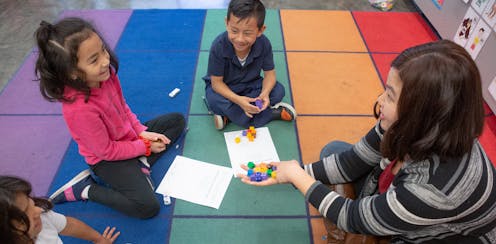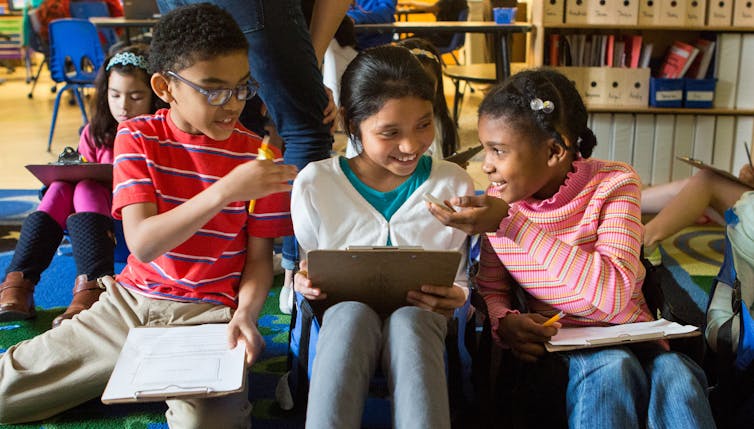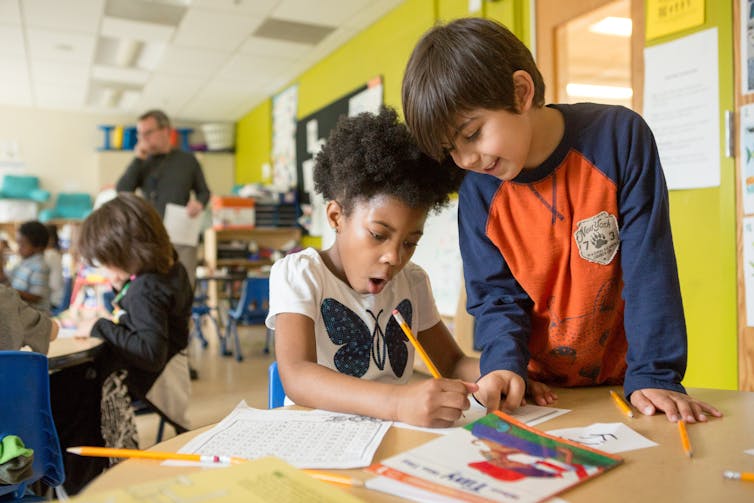
Families might be wondering why their child’s math classroom looks so different from what they remember in school.
Why aren’t teachers putting students on the spot and getting them to prove that they know the math? Why are teachers letting students solve problems in lots of different ways instead of just telling them how to do it?
Teachers are moving beyond traditional ways of teaching math and shifting towards more evidence-based equitable teaching and assessment practices. This means every student is provided with what they need as opposed to being provided with the exact same resources and assessment practices.
For example, instead of giving all students in the classroom the exact same test, a student with test anxiety will be given an alternative format to showcase their learning.
Math is not ‘neutral’
Mathematics is not a “neutral” subject — biases in math exist that are grounded in colonial ideals.
For example, what is traditionally considered a standard measurement in a Canadian math curricula is only standard in western cultures.
Traditional mathematics teaching focuses on the teacher’s way of solving a problem as the right way. Students who might think about the problem in a different way are then at a disadvantage. In some cases, their cultural way of doing mathematics is then viewed as incorrect.

Many strategies can be used
One study examined the multiplication strategies Filipino immigrant children living in Japan used. In Japanese culture, children learn a formal multiplication method (kuku) that involves learning to recite times tables, whereas in the Philippines, it is common to use finger multiplication.
Read more: Indigenous basket-weaving makes an excellent digital math lesson
The study found that immigrant Filipino families only taught their children finger multiplication if they found that their child was struggling with multiplication. The children would hide this method from their teachers.
When only one strategy for math is taught as universally correct, this marginalizes students and compounds inequities.
Draw on existing knowledge
What are some signs teachers are practising equitable teaching in math?
Teachers draw on students’ existing knowledge. In order to serve each student and their unique learning styles, teachers ideally get to know their students and how they learn best.
This means teachers view their students as having knowledge that can be shared within the learning community. This is in contrast to traditional teaching practices that work on the assumption that students are empty vessels to be filled with knowledge.
Peer collaboration
When you were in school, what did participating in classroom activities look like? Did you raise your hand? Did you turn to your elbow partner? Were you sitting in rows and expected to be quiet until you were called upon?
Equitable classrooms promote student voice and agency, peer collaboration and values learning from each other.
This creates an equitable learning environment because it provides all students with the platform to have their voices heard and validates students’ cultural ways of knowing math that may have otherwise been hidden.
An added bonus is that if all students have multiple ways to solve a problem, they have more strategies to rely on.

What an equitable math classroom looks like
Teachers get to know students through student interest surveys where students can explain what they like about math and what they need from their teachers to be successful in math.
Students can write narratives about their experiences with math to help identify students’ attitudes towards math (how they feel about themselves as a math learner, what they think math is about, whether they like math or not).
Teachers focus on how students solve problems and their solution strategies instead of just getting the right answer. Teachers allow students to show their thinking in a variety of ways (like in conversations and group work).
Instructional time (when the teacher is speaking about the ideas being taught) happens after students engage with their learning. This communicates to the students that they are capable of solving the problem, and that their ideas are both important and valuable.
There are a variety of strategies and solutions generated by the students.
Students have lots of choice about where they are working (standing at whiteboards, working collaboratively with peers or in groups, building hands-on models).
Instead of students only writing tests, the teacher is able to use diverse and different types of data to assess student learning (conversations, group work, models).
What an equitable math classroom sounds like
Teachers ask questions about what students are thinking, rather than giving them the answers.
Teachers wait for students to ask for help before assistance is offered to communicate that they are able to solve the problem (though adults can remind students they are there to help when students need it).
Students talk more than the teacher; these classrooms are loud with student talk.
Teachers ask questions about student thinking (“How do you know that’s the correct answer?”; “Can you tell me more about your thinking?”).
The teacher uses the students’ ideas to consolidate the learning after the students have worked with the problem.
What an equitable math classroom feels like
A safe space to showcase the voices and ideas of all people in the classroom.
Welcoming, fair and supportive.
Equitable math classrooms can be best realized when families, teachers and students support the importance and benefits of equitable classrooms.
The authors do not work for, consult, own shares in or receive funding from any company or organisation that would benefit from this article, and have disclosed no relevant affiliations beyond their academic appointment.
This article was originally published on The Conversation. Read the original article.







